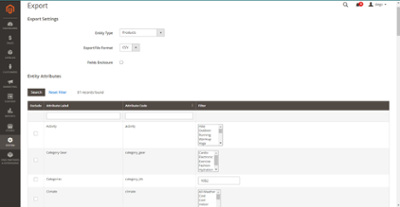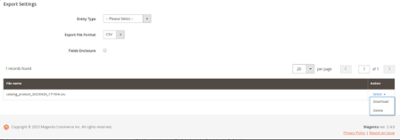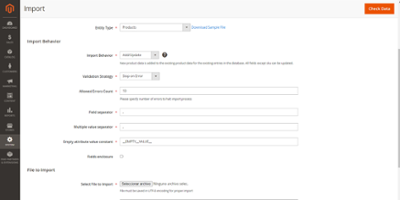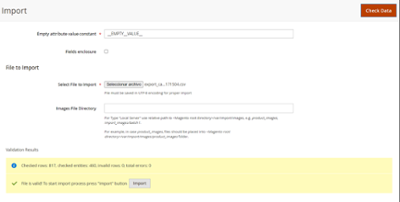Uploading Products to Adobe Commerce
Adobe Commerce is an e-commerce platform with a large and complete number of functionalities, among them is catalog and inventory management, where a...
By Role
By Industry
By Target Customer
What We Offer
We drive business growth by improving operational efficiency through process optimization, smart automation, and cost control. Our approach boosts productivity, reduces expenses, and increases profitability with scalable, sustainable solutions
Customer Experience
We design memorable, customer-centered experiences that drive loyalty, enhance support, and optimize every stage of the journey. From maturity frameworks and experience maps to loyalty programs, service design, and feedback analysis, we help brands deeply connect with users and grow sustainably.
Marketing & Sales
We drive marketing and sales strategies that combine technology, creativity, and analytics to accelerate growth. From value proposition design and AI-driven automation to inbound, ABM, and sales enablement strategies, we help businesses attract, convert, and retain customers effectively and profitably.
Pricing & Revenue
We optimize pricing and revenue through data-driven strategies and integrated planning. From profitability modeling and margin analysis to demand management and sales forecasting, we help maximize financial performance and business competitiveness.
Digital Transformation
We accelerate digital transformation by aligning strategy, processes and technology. From operating model definition and intelligent automation to CRM implementation, artificial intelligence and digital channels, we help organizations adapt, scale and lead in changing and competitive environments.
Operational Efficiency
We enhance operational efficiency through process optimization, intelligent automation, and cost control. From cost reduction strategies and process redesign to RPA and value analysis, we help businesses boost productivity, agility, and sustainable profitability.
Customer Experience
Marketing & Sales
Pricing & Revenue
Digital Transformation
Operational Efficiency
2 min read
Por Diego Aguilar Z. | Jun 02, 2025
2 min read
Por Diego Aguilar Z. | Jun 02, 2025
Many times it can be inconvenient and time-consuming to manually add a large number of products to a Magento installation.
For this reason, Magento has a built-in feature that automates the product entry. In this guide, we will go through all the step-by-step instructions to properly import your products into a Magento instance.
Export
1. Go to the left sidebar, select System > Data Transfer > Export.
The export configuration will be displayed.
2. In the Entity Type option, select the Products option.
3. A table with different options will be displayed. All of these can serve as filters if you want to make your list as precise as possible. For this example, we will only use the Category ID filter. It should look like this:

4. Scroll down to the bottom of the table, and you will see a gray button that says Continue. Click on it, and the page will reload, closing the filters table and displaying a message at the top that your request is in the queue.
>>Introduction to Adobe Commerce Coupons<<
5. Below the table, you will see the files you have generated for export. Sometimes the file will appear immediately when the page reloads. If it doesn't, wait for about 2 minutes and refresh the page.

6. To download the file, click on the blue Select option on the right side of the table. Two options will be displayed: Download and Delete. Select Download.
At this point, you have downloaded your file in .CSV format. If you want to open and view the file's contents, you can use various platforms. However, we recommend using either OpenOffice or Google Sheets. This is because they maintain the file's formatting, which may cause issues in Excel depending on the version.
Another recommendation is to remove any blank lines at the beginning of your file. This will prevent any issues during the import process.
Import
1. Go to the left sidebar, select System > Data Transfer > Import.
2. The import configuration will be displayed. In the Entity Type option, select the Products option.
>>Uploading Products to Adobe Commerce>>
3. Different options will be displayed, but the only one we are interested in is Import Behavior, which determines what we want to do with the imported products. In our case, it would be Add/Update to add or update the products. You can leave the other values the same.

4. Click on the gray button next to Select File to Import and select the previously downloaded .CSV file.
5. Click on the orange button at the top right to validate the file information. It should look like this:

6. To finalize the product import in Magento, simply click on the corresponding button, which is gray and says "Import". This will start importing all the products along with the necessary information. Once the process is complete, you will receive a confirmation message that the import was successful. In case of an error, the message will indicate the error and the line number that caused it.
>>Guide to create CMS Blocks in Adobe Commerce<<

Adobe Commerce is an e-commerce platform with a large and complete number of functionalities, among them is catalog and inventory management, where a...

Magento is a robust eCommerce solution that has consolidated itself as one of the industry leaders and is quickly growing in popularity amongst...